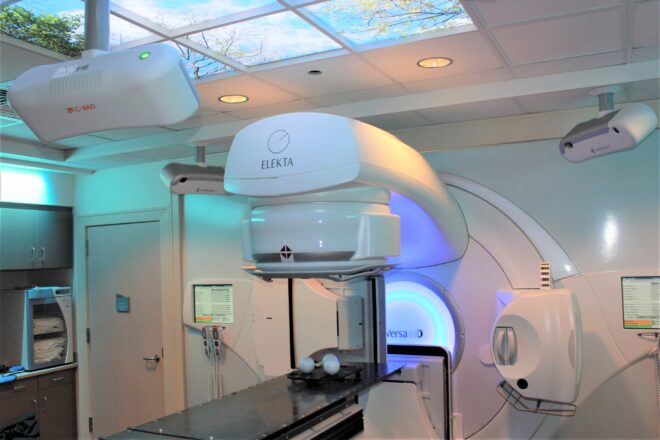UNC Health Southeastern’s Gibson Cancer Center has added state-of-the-art technology from C-RAD to enable safer radiation treatments to more cancer patients and improve their quality of life.
“The C-RAD system was selected to provide new radiation treatment technology with the highest level of accuracy and safety possible,” said Lori Dove, UNC Health Southeastern Vice President and Interim Chief Operating Officer. “This way, we know we’re offering the best quality care possible for our patients. We also valued this solution due to the seamless integration between C-RAD and the Elekta equipment on site.”
Gibson Cancer Center has two Elekta Versa HD stereotactic linear accelerators, both equipped with a C-RAD Catalyst HD system for Surface Guided Radiation Therapy (SGRT). The technology gives providers the ability to offer advanced radiation therapy treatment techniques that are not only reliable and accurate, but also very safe.
C-RAD’s Catalyst includes motion management, which ensures precise patient positioning and monitoring of that position throughout treatment delivery. Because C-RAD is tightly integrated with the radiation delivery system, any patient movement over a pre-set threshold automatically pauses the treatment. Treatment continues when the patient is back in the correct position.
According to C-RAD, once treatment begins, if, at any time, the radiation therapy is .5mm out of range, radiation pauses.
“This helps deliver more precise treatment to the affected area while reducing irradiation to healthy tissue,” said GCC Director Steve Elgin. “The additional benefit to our patients is there is no need for tattoos or markers.”
Gibson Cancer Center intends to use the equipment for stereotactic radiation therapy (SRS) and implement the latest techniques such as Deep Inspiration Breath Hold (DIBH), a more accurate delivery of radiation for left breast cancer patients while reducing irradiation to healthy tissue including the heart and lungs.
The first treatment using C-RAD technology at Gibson Cancer Center took place on Wednesday, June 16.
“We believe both patients and our physicians will have great piece of mind knowing this technology is in place,” added Elgin.







